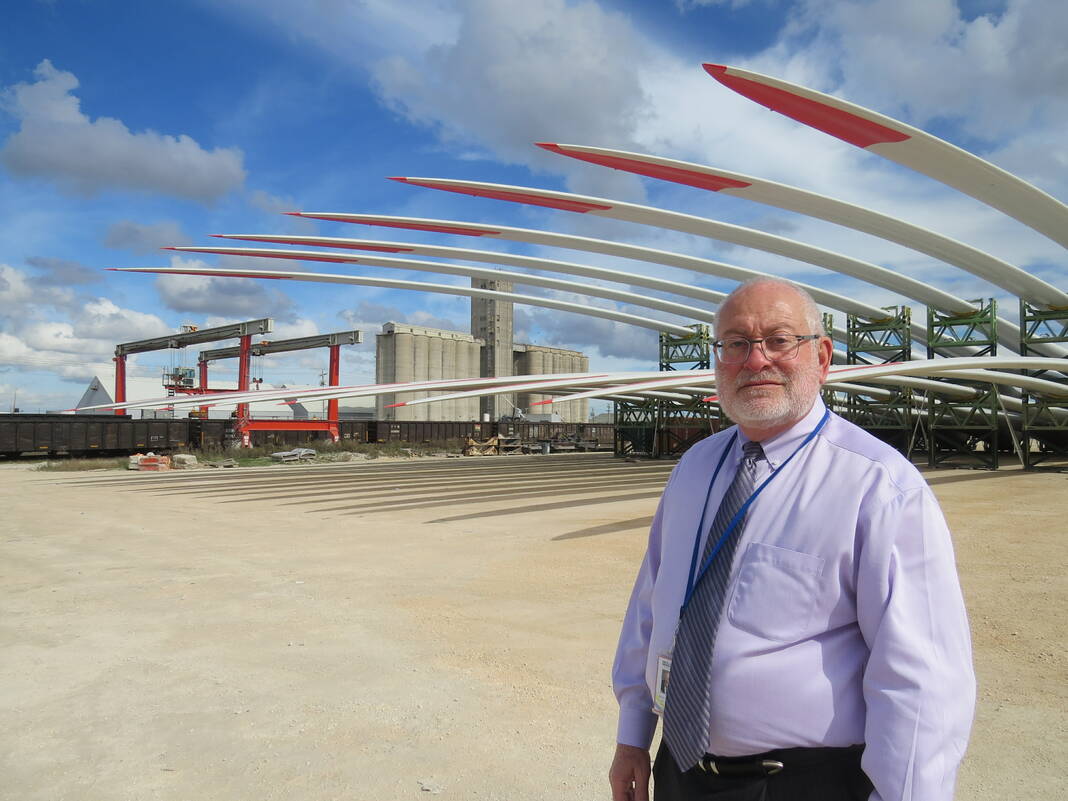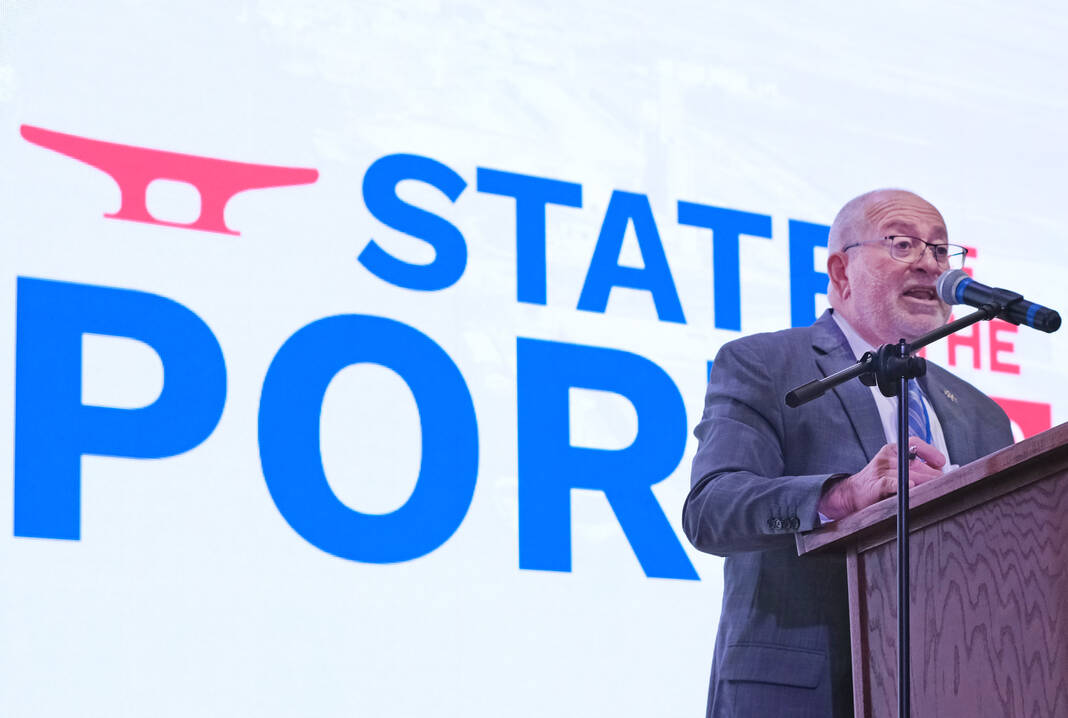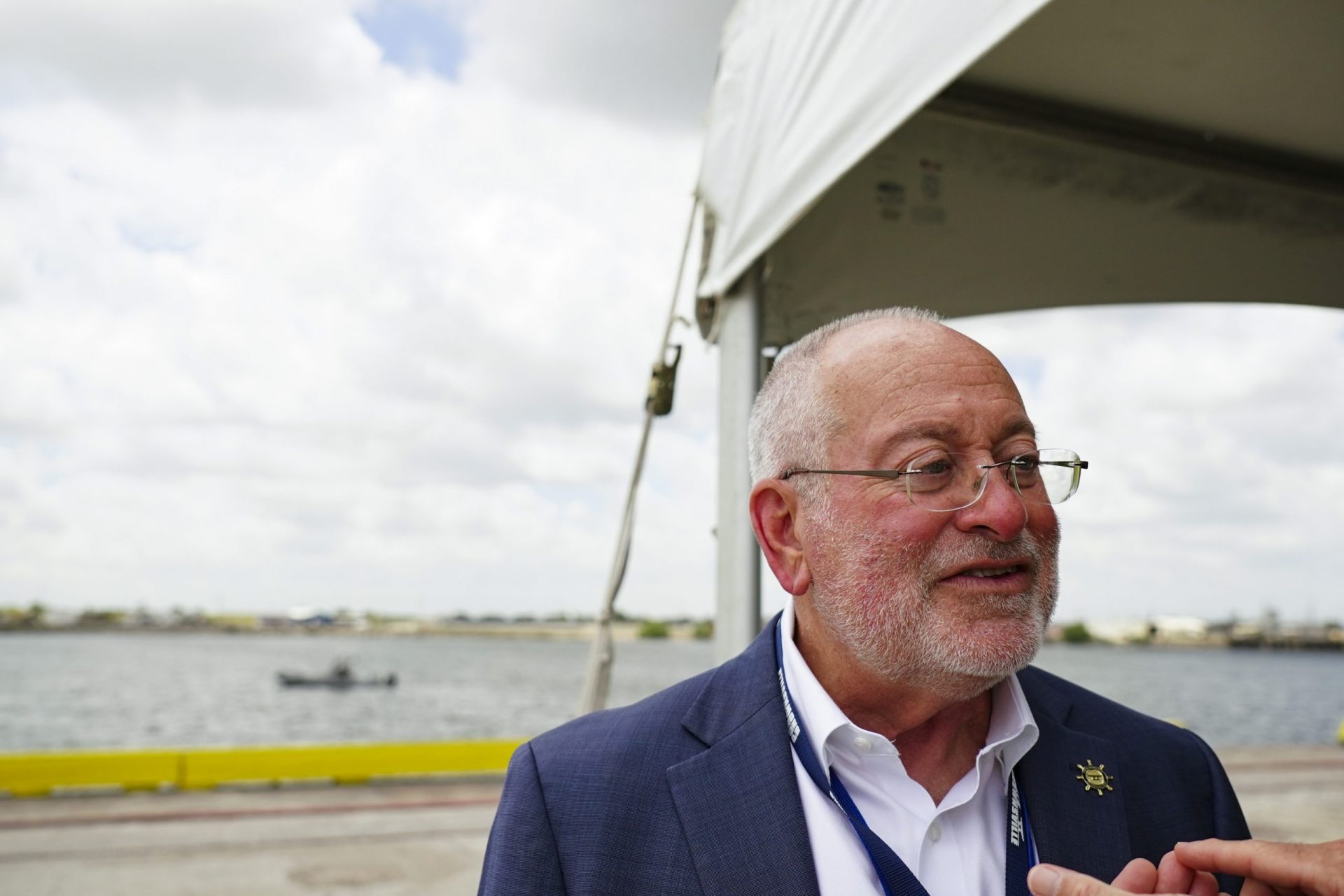|
Only have a minute? Listen instead
Getting your Trinity Audio player ready...
|

When Eduardo Campirano was hired as director and chief executive officer of the Port of Brownsville more than 16 years ago, the place was at a low point, struggling to be relevant in a competitive, modern world.
Things are very different today. Steady growth across the board has been the trend over the last decade, except a year when things leveled off briefly. Still, prospects are bright for blockbuster growth going forward, as the port’s national rankings continue to climb.
So says Campirano, a Brownsville native, who steps down as port chief at the end of this month, having advised the Brownsville Navigation District Board of Commissioners earlier this year that he would not be requesting a contract extension.
With the nation’s ports considered “essential services” during the pandemic, not even COVID put much of a dent in operations, he said.
“We actually had a very good year in 2020, and then 2021 was better than 2020, 2022 was better than 2021, and 2023 is going to be better than 2022,” Campirano said. “That trend is expected to continue for the foreseeable future.”
This year the port received validation from the U.S. Army Corps of Engineers, which annually rates the country’s top 150 ports in terms of waterborne tonnage. Brownsville’s port jumped from 66th biggest in the nation to 55th from 2021 to 2022 based on the growth of its waterborne commerce — to just under 10 million tons, according to USACE.
“This is just waterborne,” Campirano said. “This doesn’t include rail or truck or pipeline. That’s a big leap. I remember when I got here we were like 77th in the country. My goal had always been to crack the top 50.”
With fierce competition among ports for funding for capital improvements, maintenance and the like, being in the top 50 is ideal since “you don’t have to fight for the scraps,” he said.
Even if the port’s not quite there yet, it will be in coming years, in large part due to liquefied natural gas, Campirano said, noting that Rio Grande LNG has already begun site work on a plant capable of producing 27 million tons of LNG per year.

“All of that is for export, meaning it’s going to go over the water,” he said. “That alone, to reach that volume, is going to be almost three times what we are today at 10 million. You have Texas LNG right next to them. They’re still moving and they’re saying they’re going to make a (final investment decision) next year. It’s a small project, but that’s 4 million tons.”
Then there’s Ternium, which has a state-of-the-art hot rolling steel mill outside Monterey, Mexico, and is the port’s biggest customer.
“They’re expanding their terminal in Monterey,” Campirano said. “We’re moving over 5 million tons of (steel) slab for them just through this port. Incrementally that’s going to grow.”
The port is also working with Ternium on construction of a marine terminal to import iron briquettes as feed stock at its Monterey mill, representing another 3 million tons of waterborne cargo annually, he said. With LNG and more Ternium business on the horizon, and not even counting increased tonnage from other sources, the port will eventually be ranked among the nation’s top 20, Campirano said.
Gigantic blades for wind turbines remain a steady business for the port, as do cement imports, he said.
“Aluminum has become greater these last two years, and it makes sense,” Campirano said. “The automobile industry is coming back in full production, especially in Mexico. You’re seeing a lot more (aluminum) going into especially the construction of trucks. They’re becoming lighter.”
By far the most important development during his tenure has been implementing deepening of the 17-mile-long Brownsville Ship Channel after many, many years of trying to find a way, he said. The port struck a public-private-partnership (P3) deal with Rio Grande LNG and other LNG firms that wanted to build there to pay for some portion of the deepening, since it would benefit them as well. The project is already underway.

Traditionally, the federal government would pay 75% of such a massive project, with the port and partners ponying up the rest, but the port found another way, Campirano said.
“We’ve kind of thrown that model on its ear through this P3 partnership program,” he said. “We’ve got someone (Rio Grande LNG) who’s going to come in and pay about 60% of the cost of the project. At the end of the day it may be $400 million.”
For the rest of the deepening project, or phase two, the port is partnering with USACE, which will pay a portion of the cost. The port’s share, $17.5 million, has already been wired to USACE’s bank account, meaning they can start advertising for bids for phase two, which will probably cost around $108 million. The entire project should take 30-32 months to complete, Campirano said.
He described the deepening — necessary to accommodate newer, bigger, heavier cargo vessels and thus remain competitive — as a “monumental feat.”
“When I’m asked what is the most important project, it is the deepening of the ship channel, because that’s really about the future sustainability of the port,” Campirano said.
Being a top-20 port, when it happens, will be no small feat either, he said.
“When I got here it was all about how do we become a port,” Campirano said. “I think where we are today is, we’ve arrived. The issue now is how do we get it to that next level? … I’m excited about where the port is now, but I’m just as excited about where the port is going.”



